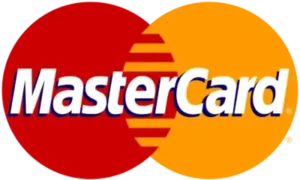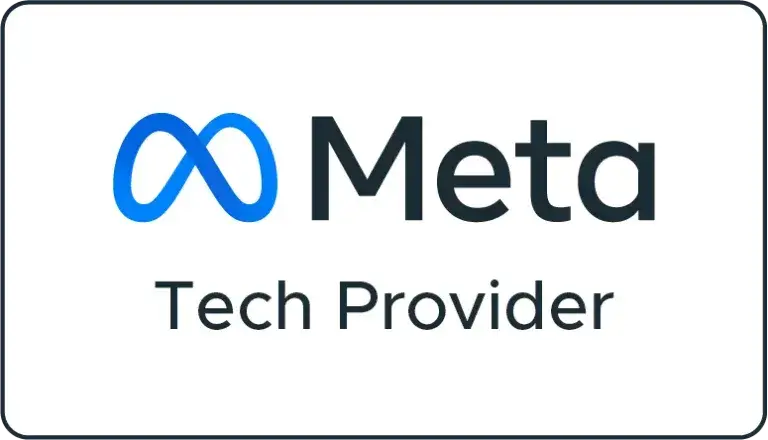Sick and tired of posting a gazillion ads for a gazillion different screen types and platforms and then another one because the original post didn’t fit the format of an ad for a different platform? No more than that, Google Responsive Display Ads will take all your problems away! Responsive ads easily adapt to any space available. You don’t need to resize the images or make the text fit, Google will do it for you. On top of that, it takes you less time and produces better results!
Overview Of Google Responsive Display Ads
In the fast-evolving world of digital advertising, responsiveness and adaptability are key. As businesses strive to capture attention in an increasingly crowded online space, Google Responsive Display Ads stand out as a smart solution. These ads automatically adjust their size, appearance, and format to fit available ad spaces across different devices, ensuring optimal display and interaction. This flexibility not only enhances the user experience but also increases the ads’ performance potential.Google Responsive Display Ads enables a company to get to a wider range of users due to one advertisement that may change its form and adaptation depending on the platform where this ad is posted.

Understanding Google Responsive Display Ads
What Are Google Responsive Display Ads?
Google Responsive Display Ads are a digital advertising groundbreaking concept . These ads enable companies to generate advertisements that are optimized for various dimensions throughout the content network. It is pertinent for marketers to first understand the concept and how this innovation can be beneficial in the advertisement of a marketing strategy.
I can not dwell on the importance of the responsive design of an ad in advertising nowadays. Due to a huge number of devices that a user may employ and a diversity of their size and side . As a result, making the ad able to accommodate it by itself is crucial. The next point is that it will look great and thus attract people and further a high level of engagement.
Google Responsive Display Ads will enable marketers to create campaigns that achieve maximum reach and impact, and this does not require marketers to make multiple versions of the same ad . As the guide progresses, we will look into some Google responsive display ads examples to illustrate the ad’s application relative to other marketing objectives. This guide will provide a comprehensive understanding of Google Responsive Display Ads and how they can be utilized to maximize the benefits of digital advertising.
Tips for Crafting Effective Responsive Display Ads
Components Of A Responsive Display Ad
To make the most of Google Responsive Display Ads, it’s essential to understand the components involved and how best to configure them.
Creating effective responsive display ads involves combining various elements that the algorithm will test and optimize:
- Images: You can upload multiple images in different sizes or use stock images provided by Google.
- Headlines: As with headlines, multiple descriptions enable Google to test them and select the most effective combinations.
- Descriptions: Similar to headlines, multiple descriptions allow Google to test and find the best-performing combinations.
- Calls to Action (CTAs): while Google offers CTAs that are commonly used, you may change them to be more in line with your campaign goals.
Design Tips For Maximum Impact
o maximize the efficiency of your responsive display ads, consider the following design considerations:
- High-Quality Visuals: The images must be clear, high-resolution, visually attractive all the while being relevant to your message.
- Concise Copy: The headlines and descriptions should be concise and effective, mentioning the key benefits and the distinguishing features of your offer.
- Strong Call-to-Action: The CTAs should be motivating and clear and easy to understand, making the customer take the desired action.
By leveraging these measures and integrating them with your strategy, you may have a good chance of maximizing the reach and engagement of your responsive display ads.
- Choose high-quality and relevant images: Images play a crucial role in grabbing the user’s attention. Use high-quality images that are relevant to your product or service. Avoid using generic stock photos and opt for images that evoke emotion or showcase your product in action.
- Craft compelling headlines and descriptions: Your headlines and descriptions should be concise, compelling, and relevant to your target audience. Use strong, action-oriented language and highlight the unique selling points of your product or service. Test different variations to see which ones resonate best with your audience.
- Ensure readability and legibility: Responsive display ads can appear on various devices and screen sizes, so it’s important to ensure that your text is easily readable. Use legible fonts, appropriate font sizes, and consider the contrast between the text and background to ensure maximum readability.
- Maintain a consistent brand identity: Your responsive display ads should reflect your brand’s identity and messaging. Use consistent colors, fonts, and imagery across your ads to create a cohesive brand experience. This helps build brand recognition and trust among your target audience.
- Test and iterate: Don’t settle for the first version of your responsive display ads. Test different combinations of assets, headlines, and descriptions to identify the best-performing variations. Continuously monitor your ads’ performance and make data-driven decisions to optimize their effectiveness.
Common Google Responsive Display Ad Formats On Desktop Websites
| Resolution | Format name |
|---|---|
| 300 x 250 | Inline Rectangle |
| 336 x 280 | Large Rectangle |
| 250 x 250 | Square |
| 200 x 200 | Small Square |
| 300 x 600 | Half-Page |
| 160 x 600 | Wide Skyscraper |
| 468 x 60 | Leaderboard |
| 970 x 90 | Wide Leaderboard |
Common Google Responsive Display Ad Formats For Mobile
| 300 x 50 | Mobile Banner |
| 320 x 50 | Mobile Banner (variant) |
| 320 x 100 | Large Mobile Banner |
| 250 x 250 | Square |
| 200 x 200 | Small Square |
Google Responsive Display Ads Examples
Real-life examples can give marketers a better perspective on how they should design and optimize responsive display ads. Here are some examples from various industries.
Example 1: Retail
Business Objective: Increase online sales for a new clothing line.
Ad Components:
- Images: High-resolution images showcasing different clothing items in various lifestyle settings.
- Headlines: Emphasize the uniqueness of the collection, seasonal promotions, and exclusive offers.
- Descriptions: Detailed descriptions highlighting fabric quality, comfort, and style versatility.
- CTA: “Shop Now” to drive direct purchases.
Success Factors:
- The use of lifestyle images allowed potential customers to envision themselves wearing the clothes, which increased engagement and click-through rates.
- Dynamic testing of headlines and descriptions helped identify the most compelling messages that resonated with the target audience.
Example 2: Travel
Business Objective: Boost bookings for summer vacation packages.
Ad Components:
- Images: Attractive photos of destination highlights, including beaches, resorts, and local attractions.
- Headlines: Capturing the allure of a getaway deal (“Escape to Paradise: Special Summer Rates”).
- Descriptions: Emphasizing the ease of booking, safety protocols in place, and special discounts.
- CTA: “Book Your Vacation Today” to capitalize on immediate buying impulses.
Success Factors:
- The vibrant imagery of destinations played a key role in capturing user interest.
- The ads were timed to appear during peak travel planning periods, maximizing visibility among the most likely buyers.
Example 3: Technology
Business Objective: Drive awareness and sales of a new tech gadget.
Ad Components:
- Images: Clean and modern visuals of the gadget from various angles and in use.
- Headlines: Highlighting cutting-edge features and introductory pricing offers.
- Descriptions: Detailed benefits of how the gadget improves daily life or enhances user efficiency.
- CTA: “Discover the Future” to intrigue tech enthusiasts and encourage clicks.
Success Factors:
- Technical details in the descriptions helped inform potential customers and set the product apart from competitors.
- Continuous A/B testing of images and headlines helped refine the approach to focus on the most marketable features.
Best Practices For Optimizing Google Responsive Display Ads
Optimizing your Google responsive display ads is essential to ensure maximum performance and return on investment. Here are some best practices to help you optimize your ads:
- Monitor performance metrics: Regularly review the performance metrics provided by Google, such as click-through rates, conversion rates, and cost-per-click. Identify trends, patterns, and areas for improvement.
- Implement A/B testing: Test different ad variations to determine which combinations of assets, headlines, and descriptions perform best. Use A/B testing to compare different variations and make data-driven decisions.
- Refine your targeting: Continuously refine your targeting options to reach the most relevant audience for your product or service. Experiment with different demographics, interests, and behaviors to find the audience that responds best to your ads.
- Leverage remarketing: Take advantage of remarketing to target users who have previously interacted with your website or shown interest in your products. By serving personalized ads to these users, you can increase the chances of conversion.
- Optimize for mobile: With the increasing use of mobile devices, it’s crucial to optimize your responsive display ads for mobile users. Ensure that your ads are visually appealing and easily navigable on smaller screens.
- Regularly update your ad assets: Keep your ad assets fresh and up to date. Regularly update your images, headlines, and descriptions to avoid ad fatigue and maintain user engagement.
- Test Extensively: Use Google’s machine learning to test a wide variety of combinations of ad components.
- Focus on Visuals: Since responsive ads appear in various formats and dimensions, visuals play a critical part in the appeal of an ad to the user. Make sure your visuals are vivid and professionally created hence Catch the user’s eye.
- Align With User Intent: Address your headlines and CTAs to the user’s search intent, vary the user’s ad message based on their stage on the buyer journey.
Integrating Responsive Ads Into Your Overall Marketing Strategy
Integrating Google Responsive Display Ads into your broader marketing strategy not only amplifies the reach and effectiveness of your campaigns but also ensures a cohesive brand message across all channels. Here’s how to effectively incorporate responsive display ads to complement your existing marketing efforts.
Complementing Other Ad Formats
Responsive display ads can effectively complement other ad formats such as search ads, social media ads, and video ads by providing a consistent presence across multiple platforms. Here’s how to synchronize these different formats:
- Search and Display Synergy: Use insights from your search campaigns to inform your display ad content. For example, keywords that drive a lot of conversions in search ads can be incorporated into the headlines and descriptions of your display ads to boost relevance.
- Cross-Promotion on Social Media: Share visuals and messages from your responsive display ads on social media to reinforce the campaign. This can increase touchpoints with your audience and improve campaign recall.
- Video Integration: If you’re using video content in your marketing, consider how short clips from these videos might be incorporated into your responsive display ads to enhance visual appeal and message consistency.
Aligning With Marketing Objectives
However, while creating your responsive display ads, it’s essential to ensure that they help you achieve the goals of your marketing objectives.
- Brand Awareness: Create your responsive display ads for campaigns that are intended to gain brand awareness. You might consider broad messaging regarding who you are as a brand and what you stand for.
- Lead Generation: Consider setting up your ads to initiate some actions if your marketing goals are into lead generations. Have clear calls -to -action and perhaps free trials or demonstrations.
- Customer Retention: To help retain existing customers or drive repeat purchases, consider targeting existing customers with personalized content, or special offers.
Continuous Optimization
Similar to any other digital strategy, continuous optimization is necessary to achieve success.
- Performance Tracking: frequently check performance compared to that of your other ad formats to establish an overall successful campaign.
- Audience Insights: Utilize audience insights to inform targeting and messaging across other marketing channels.
- Iterative Testing: Ultimately, continuously test different creative elements and messaging to determine what resonates with your audiences and refines your approach accordingly.
Responsive display ads offer several compelling advantages for digital marketers:
- Broader Reach: They can appear in more places and fit more ad sizes than standard display ads, increasing your potential reach across the display network.
- Cost-Effectiveness: By automating multiple adaptations of an ad, these ads save time and resources, reducing the need for creating multiple sets of ad graphics and copy.
- Improved Performance: With machine learning, these ads optimize themselves over time, showing the best combination of assets to meet your ad performance goals.
- Time and effort savings: Unlike traditional static ads, responsive display ads eliminate the need for manual resizing and formatting. This saves you precious time and effort that can be better spent on other aspects of your marketing campaigns.
- Improved reach and visibility: With responsive display ads, your ads have the potential to reach a wider audience across different devices and screen sizes. By automatically adjusting to available ad space, these ads can appear on websites, apps, and other platforms within the Google Display Network, increasing your brand’s visibility.
- Higher engagement and click-through rates: Responsive display ads are designed to adapt to the user’s context and preferences, increasing the chances of capturing their attention. This personalized approach can lead to higher engagement and click-through rates, ultimately driving more traffic to your website or landing page.
- Optimized ad performance: The ad is continuously optimized for performance by Google. This implies that the algorithm automatically tests various combinations of assets and learns what messages produce the best results based on user behavior. Therefore, it displays the most performing ads more frequently for increased effectiveness.
- Flexibility and scalability: Finally, this type of ads is highly flexible and easy to scale up. It is easily used to update the ad assets quickly, such as images, logo, headlines, etc., without changing the ad entirely.
What are the different types of content that can be uploaded to google responsive display ads?
Short headlines (30 characters or less)
Long headlines (up to 90 characters)
Brand or business name
Call-to-action (CTA) text
Product descriptions
Logos
Images in square (1:1), landscape format (1.91:1), or portrait format (9:16)
URLs to video assets
Tips for Setting up Image Assets
Here are some tips and best practises for advertisers to follow when they send assets to Google Responsive Display Ads:
- When you upload a landscape photo, make sure the resolution is 1.91 :1 Ratio. Even though the lowest resolution that can be used is 600 x 314, it is best to share images that are at least twice as big and have a resolution of 1,200 x 628 or better.
- The smallest size for a square picture asset is 300 x 300, but the best size is at least four times bigger: 1,200 x 1,200.
- Portrait pictures work well for tall and narrow display ads, like half-page or wide skyscrapers. Even though the smallest size these assets can be is 600 x 1067, you might want to share images that are at least 1.5 times bigger. Google says that 900 x 1600 is the best size.
- Always use the best pictures you can get your hands on. Avoid assets that are hard to read, fuzzy, skewed, overly filtered, or otherwise hard to see.
- Keep in mind that Google’s systems will help you put together photos, pictures, logos, and text. Don’t use photos or images that already have text or a name on them, as this could lead to logos that are repeated or distracting.
- Upload at least 3 to 5 images for each product you want to show in a responsive ad. It keeps your ads from repeating themselves and makes sure that your product is shown in the best way for all GDN display ad sizes.
- When you upload a picture of a product, make sure there is less than 20% of empty room around it. It helps make sure that the attention of the generated display ad stays on your products.
Targeting Options For Google Responsive Display Ads
Google provides a wide range of targeting options to help you reach your desired audience with your responsive display ads. Here are some targeting options you can consider:
- Demographic targeting: Target users based on their age, gender, household income, and parental status. This helps you tailor your ads to specific demographic segments that are most likely to be interested in your product or service.
- Interest targeting: Reach users who have shown interest in specific topics, industries, or hobbies. Google analyzes users’ online behavior, such as the websites they visit and the content they engage with, to determine their interests and serve them relevant ads.
- Behavior targeting: Target users based on their past behavior, such as their purchase history, search activity, or app installation behavior. This allows you to reach users who have demonstrated intent or a specific behavior related to your product or service.
- Contextual targeting: Display your ads on websites and apps that are contextually relevant to your product or service. Google analyzes the content of web pages and apps to determine their context and serves ads that align with that context.
- Remarketing: Target users who have previously visited your website or interacted with your ads. Remarketing allows you to serve personalized ads to these users, increasing the chances of conversion.
- Custom intent audiences: Reach users who are actively researching or considering products or services similar to yours. Google analyzes users’ search behavior and serves ads to users who are likely to be interested in your offering.
By leveraging these targeting options, you can ensure that your Google responsive display ads are shown to the most relevant audience, increasing the chances of engagement and conversion.
Tracking And Measuring The Performance Of Google Responsive Display Ads
Tracking and measuring the performance of your Google responsive display ads is crucial to understanding their effectiveness and optimizing your campaigns. Here are some key metrics and tools you can use to track and measure their performance:
- Impressions: The number of times your ads are shown to users.
- Click-through rate (CTR): The percentage of users who click on your ads after seeing them.
- Conversion rate: The percentage of users who complete a desired action, such as making a purchase or filling out a form, after clicking on your ads.
- Cost-per-click (CPC): The average cost you pay for each click on your ads.
- Return on ad spend (ROAS): The revenue generated for every dollar spent on ads. This metric helps you determine the effectiveness and profitability of your ad campaigns.
- Google Ads reporting: Google Ads provides a comprehensive reporting dashboard that allows you to track and measure the performance of your responsive display ads. It provides insights into key metrics, audience demographics, and conversion tracking.
- Google Analytics: By integrating Google Analytics with your Google Ads account, you can gain deeper insights into user behavior, website traffic, and conversions. This helps you understand how your responsive display ads contribute to overall website performance.
Regularly monitor these metrics and use the insights gained to optimize your Google responsive display ads for better performance and return on investment.
Examples Of Successful Google Responsive Display Ad Campaigns
To inspire your own Google responsive display ad campaigns, here are some examples of successful campaigns:
- E-commerce fashion brand: An e-commerce fashion brand used Google responsive display ads to showcase their latest clothing collection. By utilizing high-quality images, compelling headlines, and descriptions, they were able to capture the attention of fashion enthusiasts across different devices. The campaign resulted in a significant increase in website traffic and sales.
- Travel booking website: A travel booking website leveraged Google responsive display ads to promote discounted travel packages. By targeting users who had previously searched for travel-related keywords or visited travel blogs, they were able to reach a highly engaged audience. The campaign led to a substantial increase in bookings and revenue.
- Online education platform: An online education platform used Google responsive display ads to promote their courses to a wide range of users. By targeting users based on their interests and demographics, they were able to reach individuals who were actively seeking educational opportunities. The campaign resulted in a significant increase in course enrollments and brand awareness.
These examples demonstrate the versatility and effectiveness of Google responsive display ads in driving engagement, conversions, and brand exposure. By tailoring your ads to your specific audience and leveraging the unique features of responsive display ads, you can achieve similar success with your own campaigns.
Tools And Resources For Creating Google Responsive Display Ads
To help you create visually appealing and effective Google responsive display ads, here are some tools and resources you can use:
- Google Web Designer: Google Web Designer is a free tool that allows you to create interactive and visually stunning ads. It provides a user-friendly interface and supports responsive design, making it easy to create ads that work across different devices and screen sizes.
- Google Ads Editor: Google Ads Editor is a desktop application that allows you to manage your ad campaigns offline. It provides advanced editing capabilities for your responsive display ads, making it easier to make bulk changes and optimizations.
- Google Display & Video 360: Google Display & Video 360 is a comprehensive platform for managing and optimizing your display and video ad campaigns. It provides advanced targeting options, creative management tools, and in-depth reporting capabilities for your Google responsive display ads.
- Google Marketing Platform: Google Marketing Platform combines the power of Google Ads, Google Analytics, and other tools to provide a unified platform for managing and optimizing your marketing campaigns. It offers advanced audience insights, campaign optimization features, and cross-channel reporting capabilities.
- Google Ads Help Center: The Google Ads Help Center is a valuable resource for learning more about Google responsive display ads and how to create and optimize them. It provides step-by-step guides, best practices, and troubleshooting tips to help you get the most out of your ad campaigns.
By utilizing these tools and resources, you can create visually appealing and highly effective Google responsive display ads that drive engagement, conversions, and brand awareness.














